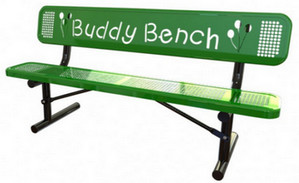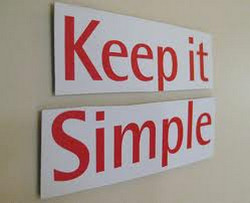 There was a video on Facebook a few weeks ago about Buddy Benches being placed in schoolyards. The video explained the importance of the communication and training that is essential to their use and effectiveness.
There was a video on Facebook a few weeks ago about Buddy Benches being placed in schoolyards. The video explained the importance of the communication and training that is essential to their use and effectiveness.
The essence of the Buddy Bench is for inclusion and safety. Kids who feel alone and have no one to enjoy their recess time with are encouraged to sit on the bench – as a signal that he/she is in need of a friend, a buddy, a playgroup to join. Conversely, when the Buddy Bench has a person sitting on it, the kids who are enjoying their recess time, are chartered to practice being a Buddy…by sharing friendship, to invite the person into their group, to ask what might be troubling the bench-sitter, to provide protection from a bully; the list of helpful acts extended from the community of kids towards the person in need of a buddy is heartwarming.Buddy Benches serve as a safe place for kids who are feeling bullied or for kids to make new friends.
In exploring Buddy Benches, I learned that they are multiplying; they are in many school districts across the country. Some Boy Scout troops are now making Buddy Benches for schools for their badge-earning credits. The Buddy Bench is a simple idea to lessen loneliness, to counter bullying, and to foster friendship and a sense of belonging. Buddy Benches provide the symbolic learning space for both asking for help and, in return, receiving the extended hand of friendship.
After learning about this uplifting idea, I thought about inclusion within our workplaces and about being our brother’s/sister’s keeper – simply because it is the right thing to do – ensuring we have each other’s back. I thought about OSHA’s workplace bullying guidance, the connection to the General Duty Clause, and knowing that escalating workplace bullying, harassment, and intimidation is linked to poorer safety performance as well as employee mental and physical wellbeing. And, of course, I thought about employee accountability – we are each accountable for our behaviors. I thought about the culture of our workplaces being strongly related to the worst behaviors we are willing to tolerate. I thought about that old book, “All I Really Need to Know I Learned in Kindergarten,” by Robert Fulghum. Remember those simple truths?
How our work worlds would be improved if we all adhered to the same basic rules as children: sharing, being kind to one another, no hitting, cleaning up after themselves, learning together, etc. Maybe we need to place something like Buddy Benches in our workplaces. What do you think?
 Each of us, as we travel to and from our work spaces want to be “safe and sound”—we want to return at the end of the day or at the end of our work-shift to our loved ones—safe and sound.
Each of us, as we travel to and from our work spaces want to be “safe and sound”—we want to return at the end of the day or at the end of our work-shift to our loved ones—safe and sound.  Things do not have to be this way! Most of the people know that this is counter-productive but that is the way it is. However, when we engage the people from across the organization in the Complexity Leadership Process, guiding them in a purposeful conversation of discovery that changes everything, they find it does not have to be that way!
Things do not have to be this way! Most of the people know that this is counter-productive but that is the way it is. However, when we engage the people from across the organization in the Complexity Leadership Process, guiding them in a purposeful conversation of discovery that changes everything, they find it does not have to be that way!




